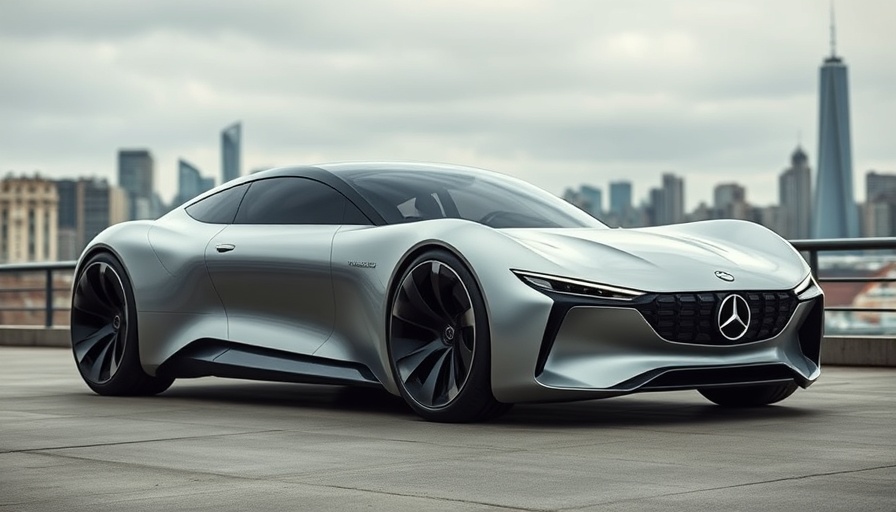
Welcome to the Future of Luxury Transportation
At the U.S. premiere of the Mercedes-Benz Vision V Concept in sunny Venice Beach, CA, the stage was set for an exciting leap into the future of luxury travel. Mercedes-Benz, synonymous with grandeur and innovation, introduced this all-electric multi-purpose vehicle (MPV), aimed at a discerning clientele in search of versatile and voluminous mobility. This vehicle promises not only transportation but an immersive experience brimming with technology, entertainment, and relaxation.
An Exciting Launch for Elite Travels
The choice of Los Angeles as the launch site was no accident. Known as a haven for celebrities and high-profile executives, the Vision V is designed for those who appreciate the finer things in life. Ralph Wagenknecht, communications lead for M-B Vans, discussed the critical need for this innovative segment in the automotive market, highlighting how the Vision V will cater to a new generation of luxury consumers eager for expansive space and cutting-edge digital amenities.
The Vision V: A Stylish Masterpiece
With dynamic proportions and elegant styling, the Vision V ensures that passengers arrive at their destinations not just in comfort, but with undeniable sophistication. Anticipation grows regarding the final production variants, the VLE and VLS, set to debut in North America in 2026. The electric architecture marks a significant leap forward as Mercedes-Benz plans to introduce these models globally, post successful launches in Europe and China.
Impressive Features That Redefine Luxury Travel
The Vision V is not only about aesthetics; it comes loaded with tailored highlights that elevate the driving experience. Features such as an illuminated three-pointed Mercedes star, a dual power dome hood, and elegant 24-inch wheels with built-in solar panels for extra range, demonstrate a commitment to both luxury and sustainability. The evening premiere showcased a spectacular light display featuring over 450 LEDs, captivating attendees with a dazzling preview of what’s to come.
The Opulent Private Lounge Experience
The interior of the Vision V is a sanctuary of luxury. With an impressive 65-inch retractable 4K cinema screen, a Dolby Atmos sound system with 42 speakers, and multiple interactive digital experiences, this vehicle offers unparalleled entertainment. Guests can recline in first-class seats equipped with a unique zero-gravity Relaxation Mode, transforming travel into an experience akin to enjoying a premium cinema at home. The ambient lighting, crystal white Nappa leather, and luxurious silk accents invite total relaxation, further enhancing the exclusive atmosphere.
Sustainability Meets Luxury: A 300-Mile Range
Furthermore, the Vision V promises a remarkable 300-mile electric range on a single charge, making it feasible for both short trips and longer journeys without concerns over emissions. This zero-emissions vehicle epitomizes Mercedes-Benz’s commitment to sustainability, creating a niche in the automotive sector that champions both luxury and environmental responsibility.
What This Means for the Automotive Industry
The Vision V stands as a testament to the evolution of the automotive industry, reflecting a move towards electric vehicles that do not compromise on luxury. As the largest automobile producer in the world, Mercedes-Benz is setting a standard in the auto market, where exclusivity and eco-friendliness can coincide. With the increasing emphasis on automotive sustainability, Mercedes-Benz is contributing significantly to this critical transition, ensuring that their vehicles are as kind to the planet as they are to the palate of luxury.
The Future of Luxury Transport Awaits
As we look forward, the Vision V is more than just a vehicle; it symbolizes a drastic shift in how we perceive transportation in luxurious settings. Mercedes-Benz’s latest concept is indicative of a larger trend in the automotive industry, where luxury, technology, and environmental consciousness unite to redefine traveling experiences. The anticipation builds as more details emerge about the production versions, promising that the Vision V will cater to the elite market poised for mobility without compromise.
As we stand on the brink of this exciting chapter in automotive history, the Vision V is set to change not just the way we see luxury transport, but the way we engage with the larger context of the automotive industry itself.
 Add Row
Add Row  Add
Add 




Write A Comment